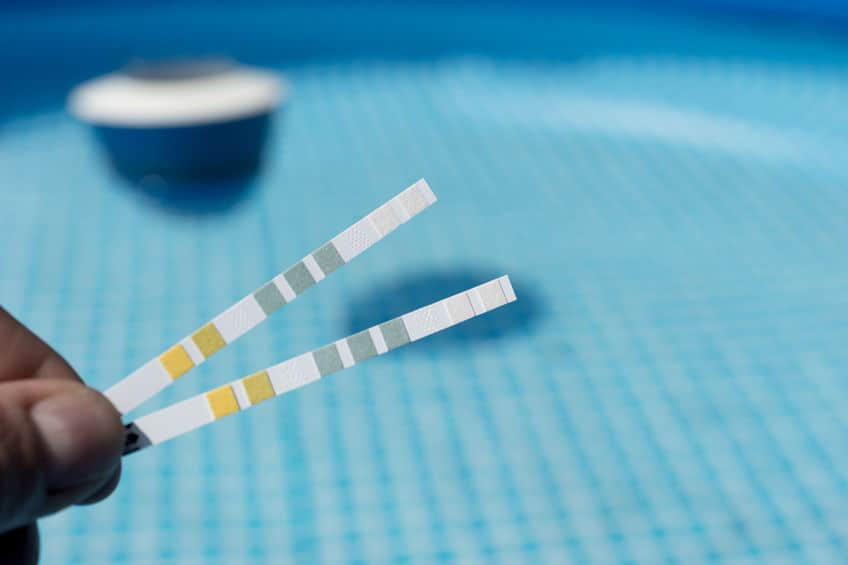Ensuring you keep the salinity level in your salt water pool within the required range is a unique aspect of maintenance that only salt water pool owners have to worry about. Dissolved salt is what gets converted into chlorine in the salt chlorinator and without it, your pool won’t be sanitized for swimming.
The three main ways you can easily test the salinity level in your salt water pool is to use:
- Instant salt reading feature of your chlorinator system
- Salt test strips
- Digital salinity meter
Below we’ll discuss how each option works and the pros and cons of each.
Instant salt reading feature of your chlorinator system
My Hayward chlorinator has an instant salt reading that constantly keeps an eye on the salinity level of the water. It looks for a salt reading of between 2700 ppm and 3400 ppm.
If the salt falls outside either the top or bottom range, eventually the salt cell will automatically shut down to protect the cell from damage. So that’s a great side benefit of this particular model!
But checking on the salt level is just a few button clicks away on this system. I just toggle to the screen that shows the instant salt reading and it tells me right away – as long as the pump is running – what the current active salt level is.
Pros: The salt level is live and instant. The salt level is measured as the water flows through the system and assuming you have a quality chlorinator, it should be an accurate reading.
Cons: Technology can fail or be inaccurate from time to time. The reading only works when you have the pump running.
Salt test strips
Pool test strips are a quick and cheap way to test not only the salt in your pool but also other elements such as free chlorine, pH, alkalinity, stabilizer (cyanuric acid), and total hardness. It depends on what the product you chose is designed for as all strips don’t test for the same thing(s).
You dip a strip in the water, swirl it around for a second or two and then pull the strip from the pool. Wait a minute and read the results from the pads on the strip compared to the color legend on the test strip packaging.
Do make sure you choose a test trip that does test for salt.
Some strips test only for salt but others can test for a combination of the other elements mentioned above. Personally, I’d pick a test trip that at a minimum tests for salt, free chlorine, pH and alkalinity together, if possible.
I take water samples in every so often to my pool company and they tell me about my stabilizer level and I’ve never had a problem with water hardness personally.
Check out my article called Should I Test The Salt Level Manually? (Salt Water Pool) to learn more about test strip options and how the strips work.
Pros: Test strips are cheap, easy to use and quick to get results, usually in less than one minute.
Cons: Don’t get them wet when not in use and don’t let them expire as they may not work properly.
Digital salinity meter
A digital salt meter is the newest option for testing salinity of your salt water pool. You hold the correct end in the pool and wait for the meter to measure the salt level in your water to produce a digital result.
Pros: Some models not only test salt but also total dissolved solids, electrical conductivity, water temperature and/or pH.
Cons: Some products reviews I read for various products complain about incorrect readings or 0 salt readings when that was not the case. Other reviewers spoke of battery leaks ruining the tester over time.
Summary
If you have an instant salt reading on your salt chlorinator, use it and perhaps back it up with the use of test strips or a digital salt reader once per week or so.
Without the proper salinity level in your pool, your salt chlorinator may not be able to produce enough chlorine to keep your pool clean and sanitized. Finding out you have a salt problem sooner rather than later is your best bet for a stress free summer in your pool.

